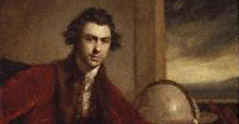|
CHURCH MISSIONARY SOCIETY ARCHIVE
General Guide and Introduction to the Archive
CHURCH OF ENGLAND ZENANA MISSIONARY SOCIETY
The Church of England Zenana Missionary Society was founded in 1880 when it separated from the interdenominational Indian Female Normal School Society, which had been founded in 1852. Its main aim was to evangelise the women of India by means of normal schools [teacher training colleges], zenana visiting, medical missions, Hindu and Muslim female schools and the employment of Bible women. The society worked in close co-operation with the Church Missionary Society and in 1957 it amalgamated with CMS. A board of trustees continued to administer the transfer of property and trust funds until 1968.
The first headquarters of the Society was at Westbourne Park, London. It served both as office and residential base for missionaries on leave, prospective candidates, deputation workers, members of the annual Spring conference and other visitors. In 1881 the office moved to 9 Salisbury Square and in 1883 the Central Home, as the residential base was called, moved to Hampstead. The office subsequently moved to Chancery Lane in 1898, Southampton Street 1929 and finally Cromwell House, Highgate in 1952. In the meantime the Central Home was also being used as the depot in connection with the industrial branches of the overseas missions. It was not always possible to find enough customers locally for the goods produced by the industrial classes to cover the costs and support the women workers, so the Society sought a market for these goods in England. Miss Sandys at headquarters received these products (not only such items as embroidered articles, brassware, rugs etc. but also chutney, curry powder and jam [these last made in the Baranagar Converts' Home]) and undertook the disposal of them through sales and local CEZMS depots in England. It was the forerunner of the work of the Indian Widows' Union. In 1888 however, it was decided to have one central depot and this was combined with the residential base and moved to the Manor House at Highbury 1888, The Lodge, Gibson's Hill, Streatham 1938 and Cromwell House, where it also incorporated the office headquarters in 1952.
The overseas work of the Society started in India but spread to China in 1884, Japan in 1886 and Ceylon in 1889. Work in China ended in 1950 when the missionaries had to leave, but from 1952 they worked among the Chinese in Malaya. Work in Japan was given up in 1892 and handed over to CMS. When the Female Education Society closed down in 1900, CEZMS took over their work in Singapore, though the Singapore School Sub-committee was not fully integrated until 1913.
CEZMS missionaries began by teaching in zenanas and day- schools. The chief stations were Trivandrum, Palamcotta (Sarah Tucker College), Masulipatam and Madras in South India, Meerut (handed over to CMS 1893), Jabalpur, Calcutta (Normal School) and Amritsar (Alexandra School) in North India.
Medical work was of great importance, The Society had taken responsibility for the work at St Catherine's hospital Amritsar and other hospitals and dispensaries were established in Bhagalpur, Srinagar, Peshawar, Batala, Narowal and Tarn Taran.
Work was also done by village missions, a central village from which evangelists visited dozens of villages grouped around the centre. These had been pioneered by Miss Clay who established the first at Jandiala in the Punjab in 1882. Others were at Ajnala, Narowal, Tarn Taran and Nadiya.
Industrial work was begun in 1883, with a class at Amritsar organised by Miss Emily Wauton. She was also the initiator of the Indian Widows' Union set up in England in the 1880s and organised by CEZMS from 1889. English widows raised financial support for grants for Indian widows' industrial classes. It was active from 1889 to 1946/7 and its reports are entered in the Annual Reports.
There was also work among the deaf and dumb in India, at Palamcotta (1900) and Mylapore (1914) and among the blind in China at Kucheng, Nantai and Foochow.
In the British Isles the Society formed a 'Home Workers' Band' for groups of women who were kept in touch with headquarters through local associations and deputations from headquarters and overseas. For young girls there was a Daybreak Workers' Union which was likewise organised into bands (about 150 of them in 1910). Children who were too young for the Daybreak workers had their own organisation, Torchbearers, begun in 1902 by Mrs Tonge. Members of both Daybreak and Torchbearers had their own magazines.
At the time the Society began 287 of the IFNS Associations and 12 of the Association Secretaries moved to the new Society. CEZMS flourished with interest spreading overseas to Canada and Australia. In 1887 and 1890 deputations were sent to Canada which increased the support and by 1900 there were in all 884 Associations. The Association Secretaries were the field staff for the Society who, as with the CMS field staff, acted as representatives of the Society in the British Isles providing information and support for the members of CEZMS within their allotted areas.
< Back
|
|















